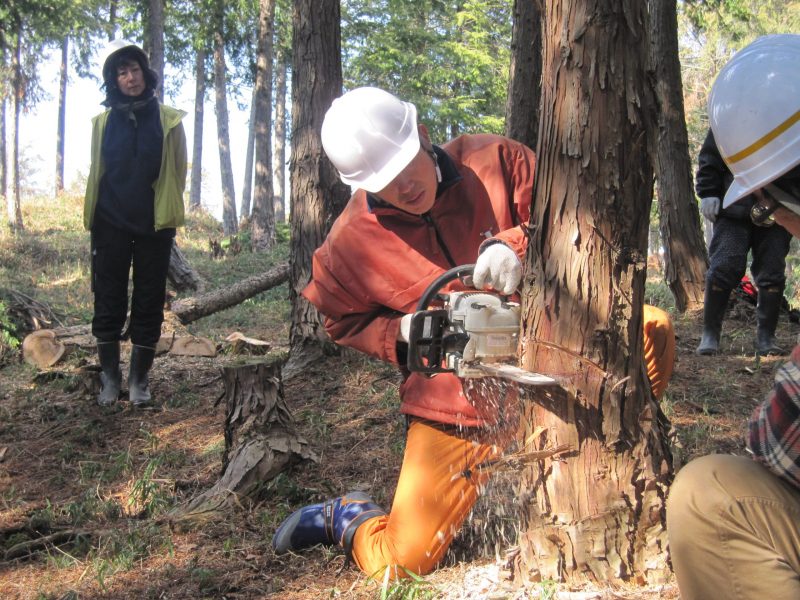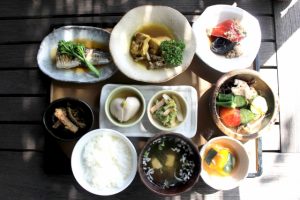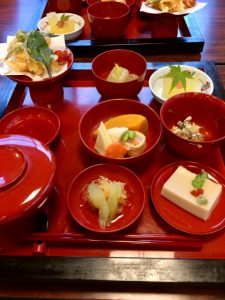Okinawa’s Longevity Lifestyle is the Japanese Satoyama Lifestyle
What kind of diet do I recommend and who are the healthiest people in Japan?
To get into that, we need to look into Ogimi village in Okinawa again.
In the book Ikigai: The Japanese Secret to a Long and Happy Life, Héctor García and Francesc Miralles give eight factors behind the long lives of the people of Ogimi village.
- They keep a vegetable garden.
- They belong to some form of a neighborhood association.
- They celebrate all the time with music and dance.
- They have an Ikigai, an important purpose in their life.
- They are proud of their tradition and local culture.
- They are passionate about everything they do.
- They help each other.
- They are always busy doing something.
The diet is not included here, although they did discuss that the diet contributed to the longevity.
Nonetheless, I discovered something interesting in these eight factors. They apply to Nagano prefecture and Shiga prefecture, which are ranked high in the recent longevity ranking, as well.
Since I live in Shiga Prefecture, I have daily encounters with elderly neighbors, and what I have observed so far, six of them apply to my neighbors.
- They have a garden.
- They belong to a neighborhood association and have a strong bond with one another: They often chat with one another and are never lonely.
- They don’t necessarily celebrate all the time since we don’t have a custom of dancing and singing on the main island of Japan like they do in Okinawa.
- They have an Ikigai because many of them are both Shintoists and Buddhists, so spirituality plays a big role in their lives.
- They are proud of their tradition and local culture. People in their seventies aren’t anymore, but people in their eighties still retain their pride.
- They are not necessarily passionate about everything they do.
- They help each other.
- They are always busy doing something: They work in the rice field, vegetable field, cutting down trees in the mountains, or fixing their houses.
Therefore apart from the 3rd and the 6th element, they are common among the seniors in rural areas of Shiga Prefecture.
I lived in a rural village in Nagano Prefecture for three years in my teens, and also feel that the six elements seen among my neighbors in Shiga apply to the seniors in Nagano.
I have lived in another rural area of Tochigi Prefecture and observed similar factors among the seniors there, but not in Tokyo where I have also lived. It seems to suggest that those six factors are common characteristics among the senior citizens in the Japanese countryside. Okinawans are unique in that they have a culture of enjoying singing and dancing, as well as having a more joyful personality prevalent among people in a warmer climate. Therefore the third and the sixth are attributes of just Okinawa, but the rest are standard throughout Japan’s rural areas.
I call this lifestyle Satoyama lifestyle, and I think, along with Satoyama diet, this Satoyama lifestyle is the key to Japan’s longevity.

In Satoyama lifestyle, we are constantly moving, and this functions as our exercises, too.

What about the diet then? According to Dr. Shoji Kondo, the diet is the key factor determining the lifespan. Is the Satoyama diet is the diet of long-lived villages discovered by Dr. Konodo? In other words, Japanese blue zones.
Yes, and no. Dr. Kondo discovered Japanese blue zones back in 1930s to 1970s, and around that time the diet was different from today. The modern-day Satoyama diet is similar to modern-day Washoku, since Washoku is not eaten so much in urban areas; Yoshoku is more common.
And yet, I said that the modern-day Washoku wasn’t the diet I recommended in the last post, didn’t I?
To understand it, we need to look into the esoteric side of Washoku seen in Zen Shojin Ryori.
The Ikigai Diet: The Secret Japanese Diet to Health and Longevity
POD Paperback
https://www.amazon.com/gp/product/4991064864
Kindle

